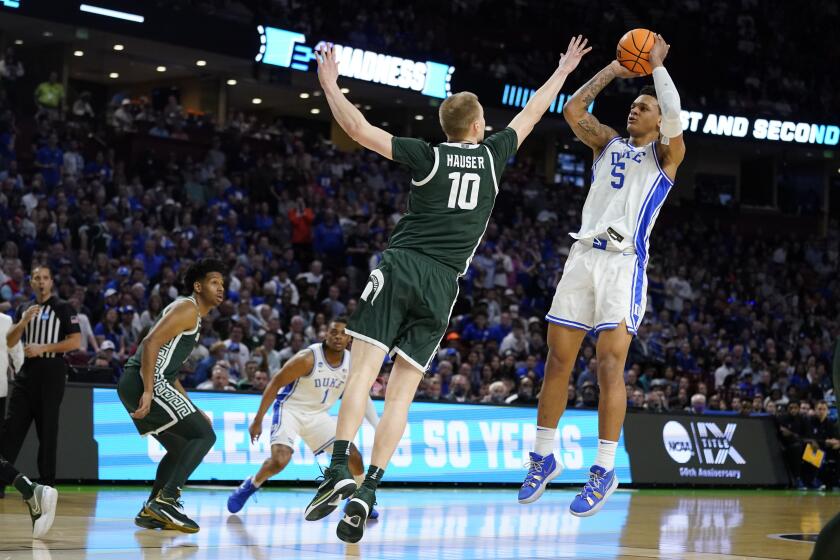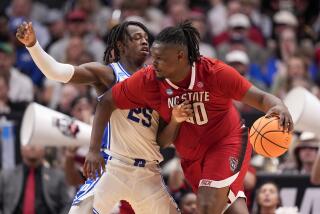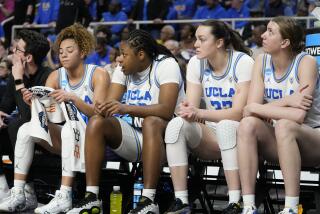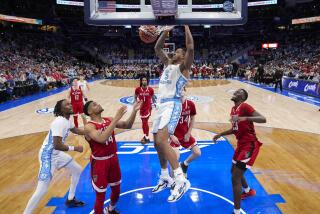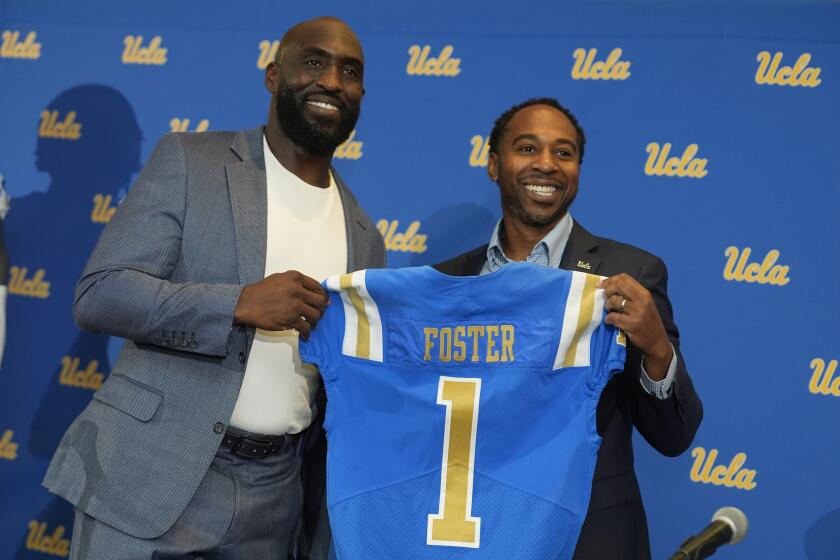How North Carolina went from an NCAA bubble mess to bigfooting all comers
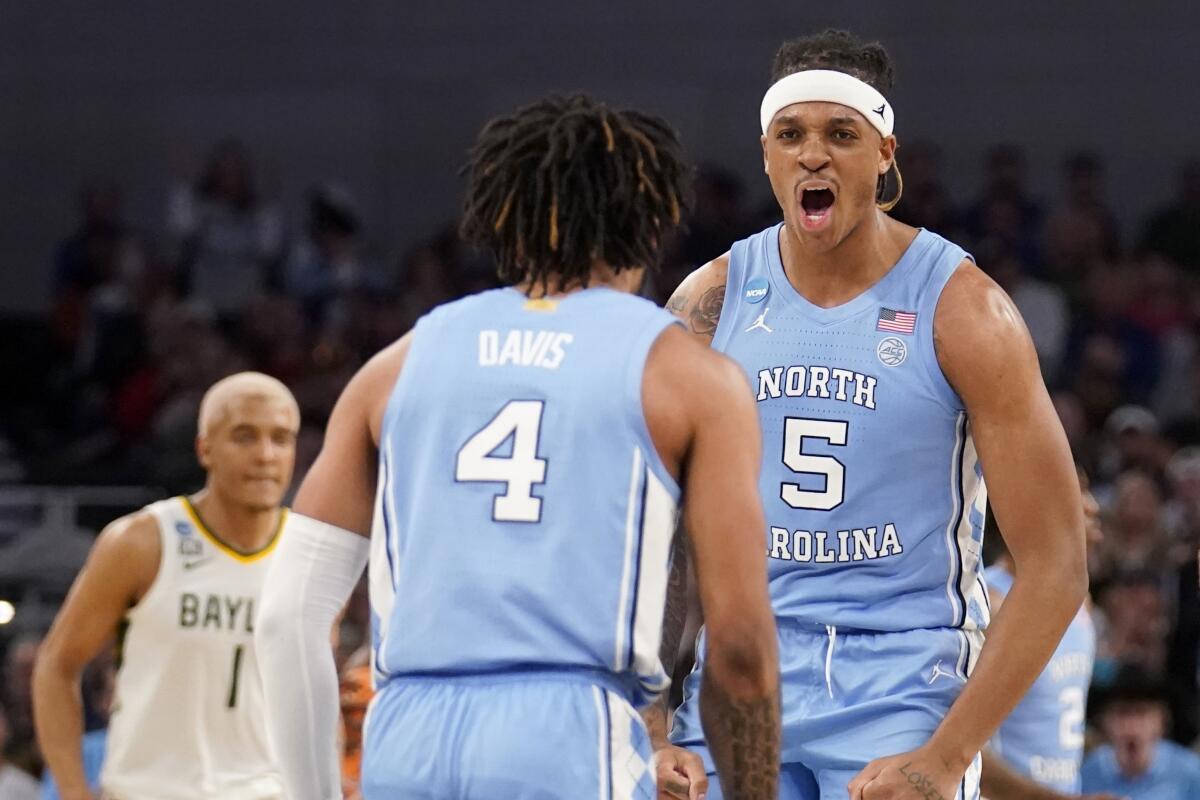
His team was completing its pregame walk-through when Mick Cronin noticed North Carolina’s latest walkover, the Tar Heels appearing well on the way to stomping out Baylor’s bid to repeat as national champions.
At that moment, North Carolina led by 25 points.
“So I was curious,” Cronin would later recall while contemplating UCLA’s next opponent in the NCAA tournament, “as to who the heck the one seed was, from what I was watching.”
It became harder to tell over the game’s final minutes, the eighth-seeded Tar Heels stumbling amid a controversial ejection and a flurry of turnovers. They regained their footing in overtime to take down the top seed.
The game was a lot like North Carolina’s first season under coach Hubert Davis. Early promise gave way to turmoil and doubts before ultimately being replaced by joy and a feeling that a bright ending could be in the works.
Having gone from the rubble of the bubble to big-time trouble, the Tar Heels (26-9) will try to topple the fourth-seeded Bruins (27-7) on Friday night in an East Region semifinal. It will be a battle of blue bloods at the Wells Fargo Center in Philadelphia, not to mention varying shades of blue on the uniforms vying for supremacy.
“You can’t be playing better than Carolina is playing,” Cronin said after his team defeated St. Mary’s to reach a battle of national brands. “They’re shooting the lights out.”
For much of the season, North Carolina fans could imagine something finer.
Duke survived some tense moments in the closing minutes against Michigan State and extended coach Mike Krzyzewski’s final NCAA tournament run.
The team’s NCAA tournament fate was in doubt as recently as mid-February after a home loss to Pittsburgh left its record at 18-8. The Tar Heels’ play was disjointed, their offense inconsistent, their championship pedigree unable to save them from double-digit losses to Tennessee, Kentucky, Miami, Wake Forest and Duke.
The Tar Heels kept getting bullied by teams that imposed a physical style, disrupting their offense. So they made RJ Davis their primary ballhandler, tightened their defense thanks to relentless small forward Leaky Black and hardened their resolve.
Hubert Davis, a former standout Tar Heels guard who replaced the legendary Roy Williams, preached Bible verses and wrote three phrases on the whiteboard before his team faced archrival Duke in coach Mike Krzyzewski’s final game at Cameron Indoor Stadium.
Plant your feet.
Stand your ground.
Fight back.
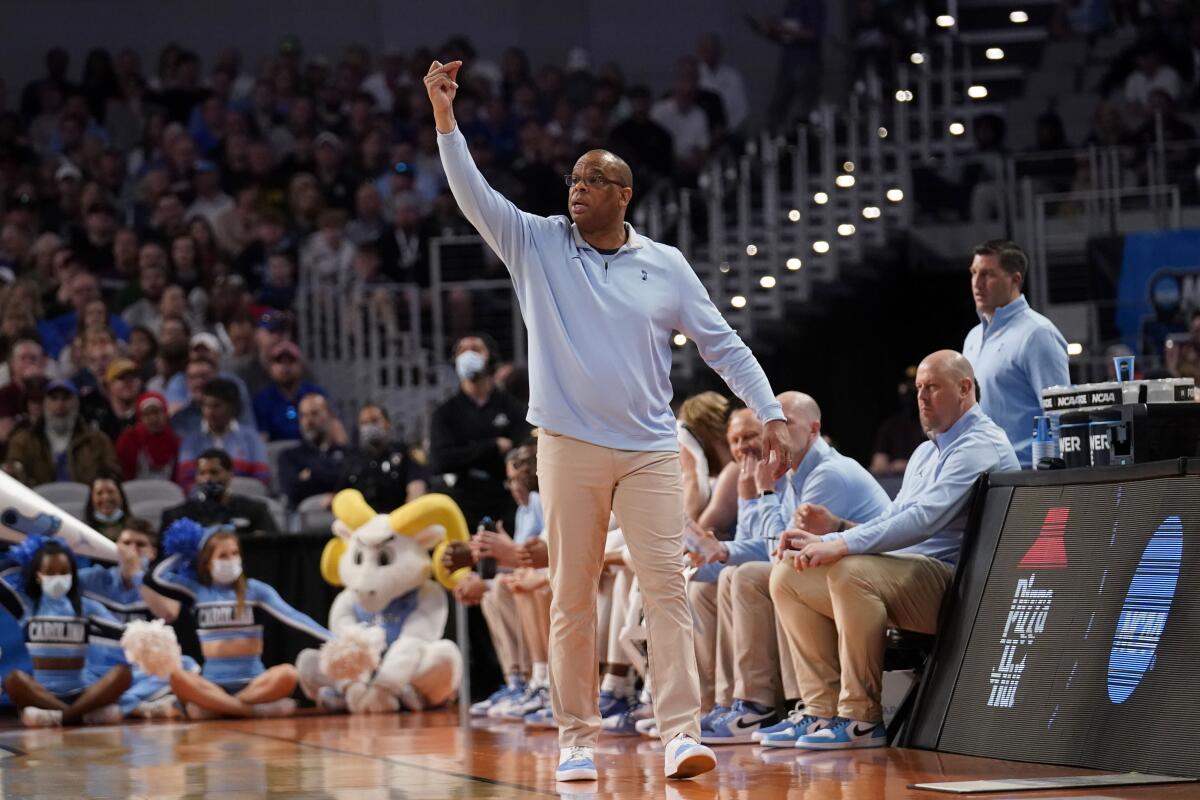
The Tar Heels went three for three in crushing the Blue Devils and the spirits of nearly 100 former players who showed up for a celebration and witnessed a wake. Several Duke students wept over the 94-81 loss.
Meanwhile, North Carolina’s famed Franklin Street has been abuzz the last month, the Tar Heels winning eight of nine games, including a 32-point drubbing of Marquette in the first round of the NCAA tournament. Even the team’s No. 8 seed seemed fortuitous given it had twice previously taken down a No. 1 seed in that position, including a triumph over Oklahoma in 1990 with Davis on the roster. The 2000 team that upset top-seeded Stanford in the second round reached the Final Four.
Friday’s showdown between the Bruins and Tar Heels could easily have been a rematch; the teams were scheduled to meet in December as part of the CBS Sports Classic in Las Vegas before UCLA’s coronavirus outbreak led to a rash of cancelations, postponements and a 26-day layoff between games.
If Jaime Jaquez Jr. cannot play in UCLA’s NCAA tournament Sweet 16 game against North Carolina, Bruins coach Mick Cronin has multiple strong options.
The teams have met in high-stakes games before, including the 1968 national championship at the Sports Arena. John Wooden’s Bruins demolished Dean Smith’s Tar Heels 78-55, behind 34 points and 16 rebounds from the unstoppable Lew Alcindor (now Kareem Abdul-Jabbar). North Carolina earned a small measure of revenge in 1989 by beating UCLA 88-81 in the second round of the NCAA tournament.
Cronin is familiar with the challenges of playing the Tar Heels this time of year. His final Murray State team, as a No. 14 seed, nearly beat third-seeded North Carolina in 2006 before the Tar Heels pulled out a 69-65 first-round victory.
These Tar Heels could prove especially troublesome in the frontcourt. Brady Manek, the stretch forward with the scruffy red beard who was ejected against Baylor for throwing an elbow to the head of Bears forward Jeremy Sochan, possesses a quick release on his jump shot. The Oklahoma transfer has become a volume scorer, notching at least 20 points in five of his last six games. Forward-center Armando Bacot is a double-double machine who could have been the Atlantic Coast Conference player of the year.
If he can return from the sprained right ankle that forced him to miss the last seven minutes of UCLA’s victory over St. Mary’s, Jaime Jaquez Jr. will presumably draw the defensive assignment on Manek.
Less clear is who would guard the 6-foot-10 Bacot. UCLA’s Cody Riley made a game-saving block against Akron and stifled St. Mary’s pick-and-roll game, but those successes came against far lesser athletes.
Cronin might have to lean heavily on center Myles Johnson, the team’s primary stopper in the weeks before the NCAA tournament, to thwart Bacot and his teammates.
Nothing will come easy. After months of missteps, the Tar Heels are back to bigfooting opponents.
More to Read
Go beyond the scoreboard
Get the latest on L.A.'s teams in the daily Sports Report newsletter.
You may occasionally receive promotional content from the Los Angeles Times.

